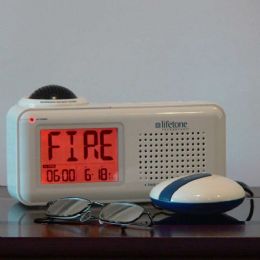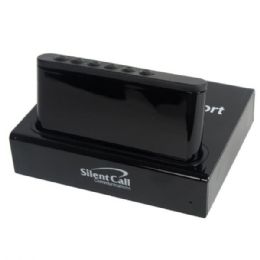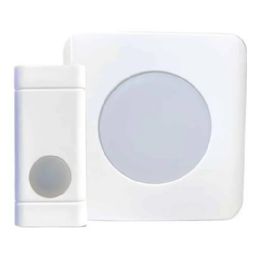





.jpg&newheight=260&quality=80)
What are Hearing Impaired Alert Devices?
In the past, when people were deaf or had a hearing impairment, they would often have to rely on others for their safety and communication. Now, technology has advanced to where a hearing impaired individual can be more independent than ever before with alert devices specifically created for notifying people about possible dangers or assisting them with communicating with others. Assistive technology can now offer the hearing impaired alert devices that assist them with everyday events and tasks, and that are also a lifesaver in emergency situations. These devices typically include one or more of the following types of signals:
Auditory – A signal device that will provide increased amplification noise such as a loud alarm clock or a weather alert device.
Visual indicator – Usually a device with bright flashing lights or strobe lights to call attention to a situation or possible problem; for example, a smoke/carbon monoxide detector, or a telephone signaler.
Vibrotactile – A device that includes a vibrating component to alert a sleeping or sitting individual with a type of signaling device. This is most often used with alarm clocks that are connected to a ‘bed-shaker’ that will vibrate the mattress of the users to help wake them up. There are also personal vibrating shakers that receive signals from various transmitters that can click onto a belt or pocket of the user.
What Are Some Different Types of Hearing Impaired Alert Devices?
Alarm clock: Many hearing impaired individuals have problems hearing a standard alarm clock in the morning. Specially designed wake-up signalers for alarm clocks for people with hearing loss come in many variations, such as a device for the deaf that shakes the mattress of the user at the appointed time. Alarm clocks may also come with bright flashing lights or a very loud sound for the deep sleeper or hearing impaired. A hearing impaired alarm clock will often use a combination of different wake-up signalers of a loud noise, flashing lights and/or a vibrating bed shaker.
Smoke/carbon monoxide detector: These devices can be sold as a combination of a fire and carbon monoxide detection unit, or may be sold separately. By using either an extra loud alarm sound, flashing strobe lights, a bed-vibrating alarm or a combination of some or all of these alarm signals, a smoke and/or carbon monoxide detector for the hearing impaired alerts the users that smoke or dangerous levels of carbon monoxide have been detected. These alarms have a louder and lower-pitched sound that is more likely to wake up a sleeping hearing impaired person.
Telephone signaler: To know when a phone rings, there are various types of signalers that can be attached to the phone to inform a hearing impaired individual of the ringing telephone. There can be wireless attachments that either connect directly into the power outlet and the telephone line to increase the volume of the ringer and/or can be programmed to blink a lamp or overhead light on-and-off to announce a call. Another type of signaler can be attached to the side of the phone, allowing it to pick up and amplify the ringer sound directly.
Doorbell signaler: Working either with or without an existing doorbell system, a wireless doorbell signaler alerts a hearing impaired individual to the presence of a visitor. There are various types of doorbell signals that are used, such as flashing lamp lights, vibration pads, and flashing strobe lights. Some doorbell signalers can offer a selectable number of lamp light flashes, or different flash codes can be programmed to announce a visitor at different doorways; for example the front door, rear door, and garage door, while it may even give alerts about window access.
Baby cry signaler: For hearing impaired individuals, a regular baby monitor will often not create enough sound to be alerted to the baby’s movements, crying or sounds. Baby monitors now have transmitters and receivers specifically meant to transmit a baby’s crying to an alert system that can increase the sound volume, or have features such as indicator lights or a vibration notification for the parents.
Weather alert: Sometimes hearing impaired individuals may not know about upcoming dangerous storms because they may not watch much TV or listen to the radio, and also may not hear the thunder and wind. A weather alert device can give important warnings received from NOAA’s 24/7 National Weather Service broadcast about impending storms and up-to-the-minute emergency information by signaling hearing impaired people with a loud siren, strobe lights, a bed shaker, or a combination of all of these.
Rehabmart is proud to offer superior quality hearing impaired alert devices from such experienced and esteemed vendors as MaxiAids, Harris Communications, Hearmore, and Enabling Devices.
Mike Price, OT
Rehabmart Co-Founder & CTO
ws